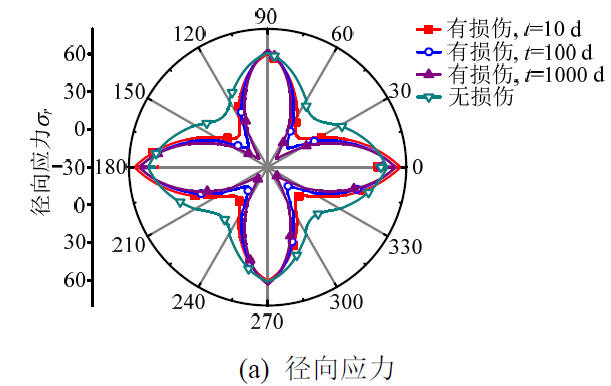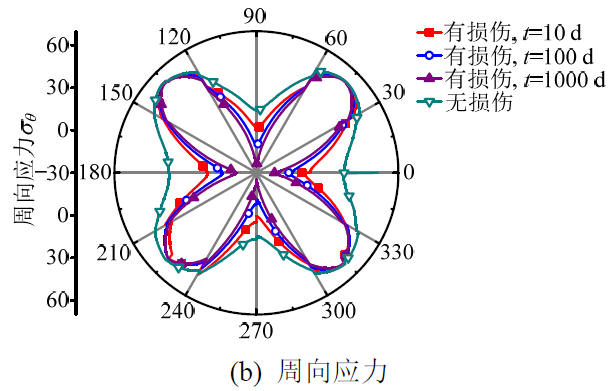
This research is supported by China Postdoctoral Science Foundation (Grants No. 2015M571030, Principal Investigator: Dr. Yongliang Wang)
TDBORE solver 3D v1.1

· CT image of glutenite ·Reconstruction model of glutenite · Numerical model of glutenite
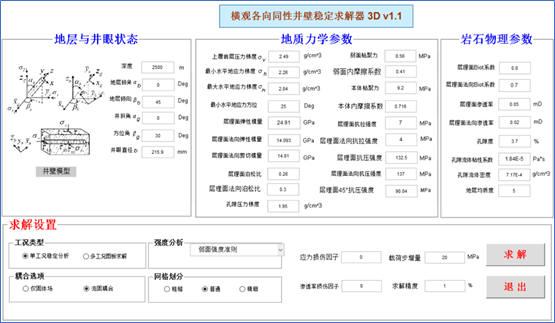
· Input interface of TDBORE solver 3D v1.1
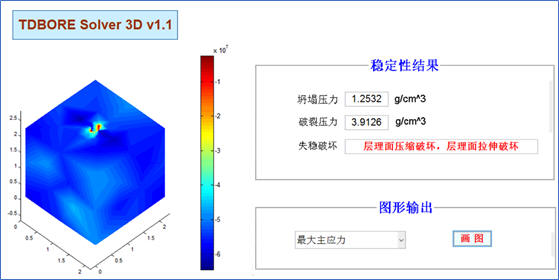
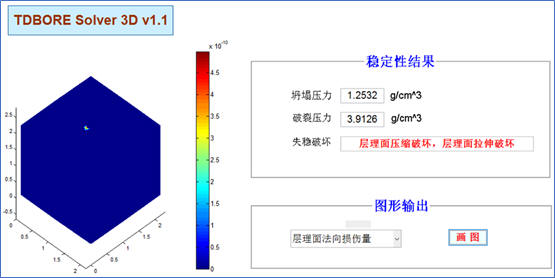
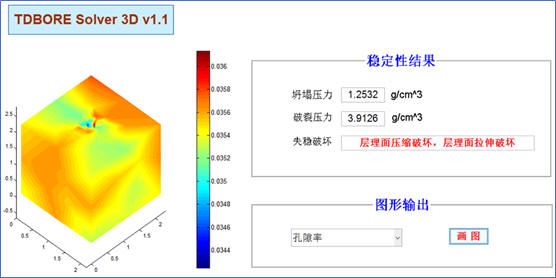
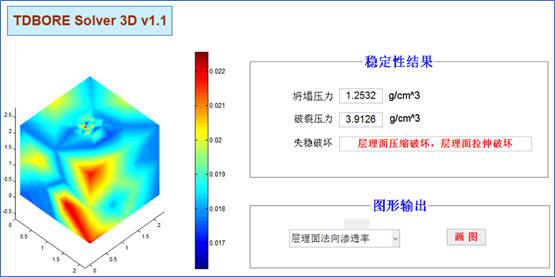
· Output interface of TDBORE solver 3D v1.1 (Simulation results of numerical model of glutenite )
Published research papers for damage evolution, multi-fields coupling and wellbore stability
The finite element analysis (FEA) technology by hydraulic-mechanical-damage (HMD) coupling is proposed in this paper for wellbore stability analysis of transversely isotropic rock, developed basing on the recently established FEA technology for iso-tropic rock. The finite element (FE) solutions of numerical wellbore model, damage tensor calculation and Pariseau strength cri-terion for transversely isotropic rock are developed for researching the wellbore failure characteristics and computing the collapse and fracture pressure of laminated rock as shale reservoirs. The classic Biot constitutive for rock as porous medium is intro-duced to establish a set of FE equations coupling with elastic solid deformation and seepage flow. To be in accord with the in-clined wellbore situation, the coordinate transformation for global, wellbore, in-situ stress and transversely isotropic formation coordinate systems is established for describing the in-situ stress field and the results in laminated rock. To be in accord with the practical situation, a three-dimensional FE model is developed, in which several other auxiliary technologies are comprehensively utilized, e.g. the typical Weibull distribution function for heterogeneous material description and adaptive technology for mesh re-finement. The damage tensor calculation technology for transversely isotropic rock are realized from the well-developed contin-uum damage variable of isotropic rock. The rock is subsequently developed into a novel conceptual and practical model consid-ering the stress and permeability with the damage. The proposed method utilizing Pariseau strength criterion fully reflects the strength parameters parallel or perpendicular to bedding of the transversely isotropic rock. To this end, an effective and reliable numerically three-step FEA strategy is well established. Numerical examples are given to show that the proposed method can establish efficient and applicable FE model and be suitable for analyzing the state of pore pressure and stress surrounding well-bore, furthermore to demonstrate the effectiveness and reliability of the instability analysis of wellbore failure region and the safe mud weight computation for collapse and fracture pressure of transversely isotropic rock.
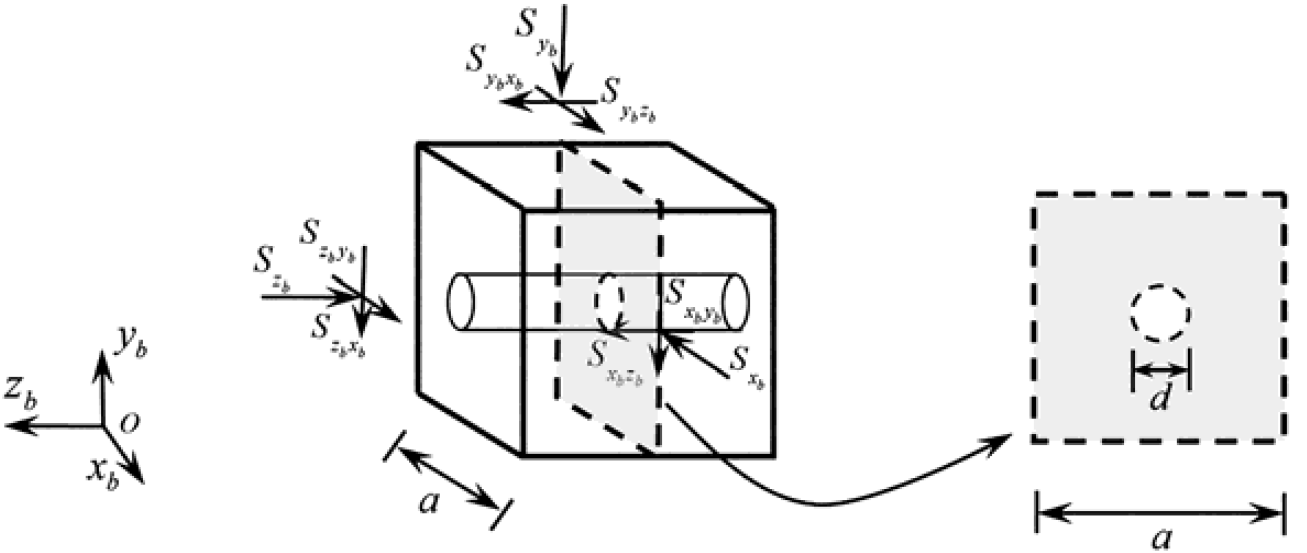
2. 2017, Science China Tech. Sci, Finite element analysis for inclined wellbore stability of transversely isotropic rock with HMCD coupling based on weak plane strength criterion
The finite element analysis (FEA) technology by hydraulic-mechanical-chemical-damage (HMCD) coupling is proposed in this paper for inclined wellbore stability analysis of water-sensitive and laminated rock, developed basing on the recently established FEA technology for transversely isotropic rock with hydraulic-mechanical-damage (HMD) coupling. The chemical activity of the drilling fluid is considered as phenomenological hydration behavior, the moisture content and parameters of rock considering hydration could be determined with time. The finite element (FE) solutions of numerical wellbore model considering the chemical activity of drilling fluid, damage tensor calculation and weak plane strength criterion for transversely isotropic rock are developed for researching the wellbore failure characteristics and computing the time-dependent collapse and fracture pressure of laminated rock as shale reservoirs. A three-dimensional FE model and elastic solid deformation and seepage flow coupled equations are developed, and the damage tensor calculation technology for transversely isotropic rock are realized by introducing effect of the hydration and the stress state under the current load. The proposed method utilizing weak plane strength criterion fully reflects the strength parameters in rock matrix and weak plane. To the end, an effective and reliable numerically three-step FEA strategy is well established for wellbore stability analysis. Numerical examples are given to show that the proposed method can establish efficient and applicable FE model and be suitable for analyzing the timedependent solutions of pore pressure and stresses, and the evolution region considering the hydration surrounding wellbore, furthermore to compute the collapse cycling time and the safe mud weight for collapse and fracture pressure of transversely isotropic rock.
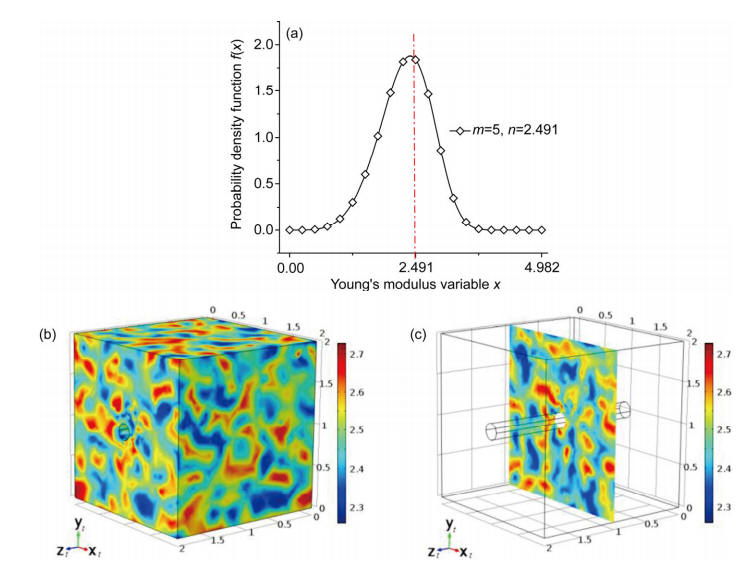
A numerical finite element (FE) analysis technology is presented for efficient and reliable solutions of rock with hydraulic-mechanical (HM) coupling, researching the seepage characteristics and simulating the damage evolution of rock. To be in accord with the actual situation, the rock is naturally viewed as heterogeneous material, in which Young???s modulus, permeability, and strength property obey the typical Weibull distribution function. The classic Biot constitutive relation for rock as porous medium is introduced to establish a set of equations coupling with elastic solid deformation and seepage flow. The rock is subsequently developed into a novel conceptual and practical model considering the damage evolution of Young???s modulus and permeability, in which comprehensive utilization of several other auxiliary technologies, for example, the Drucker-Prager strength criterion, the statistical strength theory, and the continuum damage evolution, yields the damage variable calculating technology. To this end, an effective and reliable numerical FE analysis strategy is established. Numerical examples are given to show that the proposed method can establish heterogeneous rock model and be suitable for different load conditions and furthermore to demonstrate the effectiveness and reliability in the seepage and damage characteristics analysis for rock.
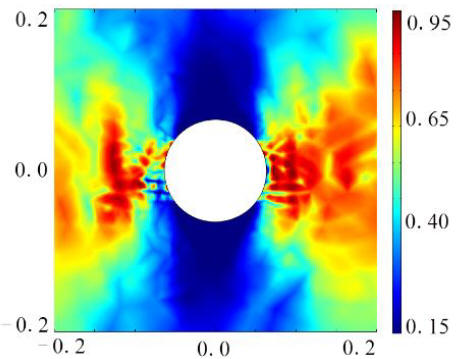
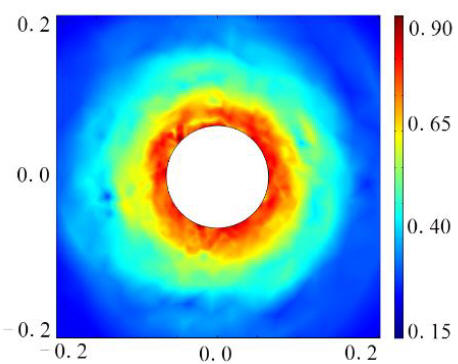
4. 2016, 工程力学, 基于连续损伤的岩石渗流有限元分析
该文基于连续损伤力学,建立了含损伤的岩石渗流模型,研究岩石损伤破坏并分析其渗流特性。该文采用Weibull分布函数来模拟岩石弹性模量和强度的非均质特性,利用Biot本构关系建立含孔隙结构的弹性变形方程,结合Drucker-Prager强度准则、统计强度理论和连续损伤理论推导出岩石连续损伤演化控制方程及其定解条件,进而采用有限元法对其求解。该文给出的数值算例结果表明所提出的含损伤渗流模型适用于研究岩石的渗流特性,分析结果与实验数据吻合较好,且该求解方法可以对岩石体积压裂、岩层弱面进行可靠、有效的数值分析。
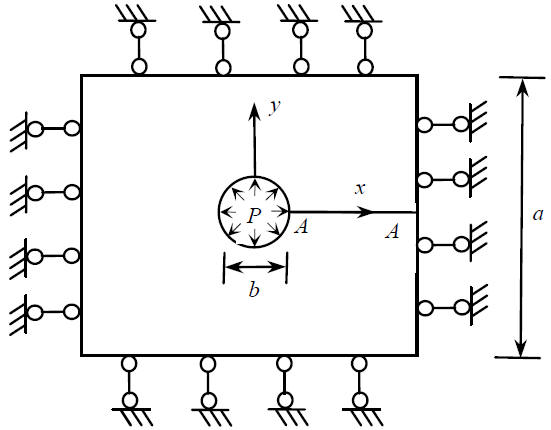
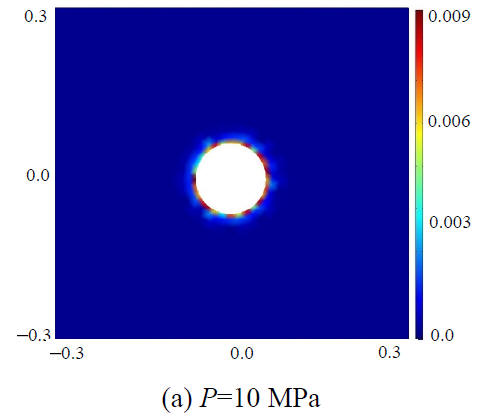
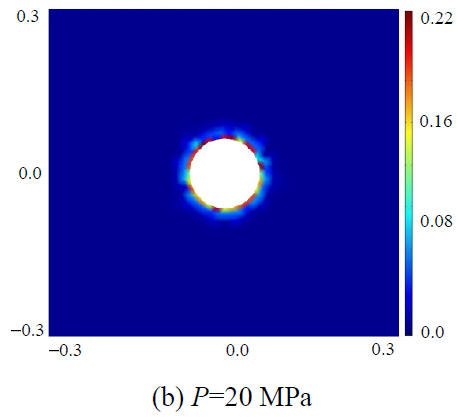
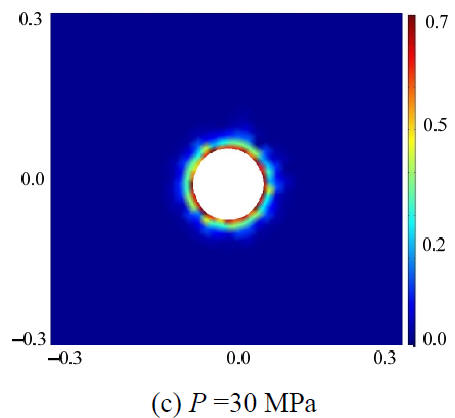
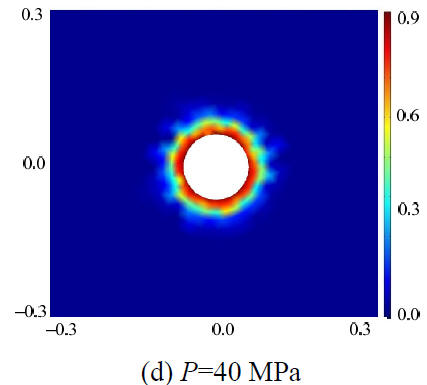
5. 2017, 工程力学, 横观各向同性岩石力学-化学-损伤耦合有限元分析
该文基于层理性岩石的水化作用和连续损伤特性,建立力学-化学-损伤耦合的有限元(FEM)求解方法,开展含钻井孔岩石的井壁应力和围岩损伤演化分析。该文发展横观各向同性Biot本构关系,采用Weibull分布函数表征岩石的非均质性;考虑水化作用引起的损伤,结合当前应力状态的应力损伤得到损伤张量,对弹性模量和渗透率进行损伤分析,实现层理性岩石在水化和荷载作用下的连续损伤演化,形成一套渗流-应力-化学-损伤(HMCD)耦合分析方法。文中给出数值算例,将含损伤横观各向同性模型用于研究层理性岩石的水化特性,表明岩石的非均匀性和水化作用对井壁应力解答具有重要影响,该有限元求解方法可对岩石水化、损伤进行可靠、有效的数值分析。
